Air provocations: hot sky
1991 year was the beginning of a new era in the world stories, which began with the collapse of the USSR into independent states. With its disappearance, the longest war of the twentieth century, which was fought between the West and the East, was called the Cold War. Covert fighting has been going on for 46 years, not only on land, but also at sea and in the air. Beginning of the Cold War - 1945 year. The goal is the struggle for world domination of the capitalist and communist superpowers.
Neither the USA nor the USSR could openly oppose each other, so all the confrontation resulted in a cold war.
Over all these years, the Americans conducted large-scale intelligence activities against the Soviet Union, violating air, sea and land borders. Not without provocations. It is clear that the USSR could not allow such actions to take place with impunity, therefore such provocations often ended in local battles. Mostly they were in the air.
Starting from 1945, American aircraft carried out reconnaissance of Soviet Far Eastern territories, in particular, Kamchatka, the Bering Strait, Chukotka, and the Kuril Islands. And there were reasons for this. The war between America and Japan in the Pacific entered its final stage. The actions of the Americans in the air sharply intensified.
Despite the fact that during the Second World War, America and the USSR were allies, this did not prevent the Americans to feel very freely in the airspace, quite often flying over Soviet military bases and ships. It must be remembered that, most likely, the American pilots making such flights did not think about the problems of big politics, suggesting that the principles of military fraternity are above all. However, the leaders of both countries needed excuses for the outbreak of conflicts and, as you understand, they did not have to look for them for a long time.
At the end of May 1945, Pacific anti-aircraft artillery fleet shot two American military aircraft B-24. The incident occurred in the Kamchatka region. Two months later, a similar situation occurred with another American aircraft R-38, and in the same area. But since the fire was not fought, the planes did not receive any damage. But the Americans answered much harder. In August 1945, U.S. air force aircraft fired on two Soviet border boats near the Kamen Island, wounding 14 and killing 8 crew members. It can be assumed that the American pilots mistook the Soviet ship for the Japanese, but the first victims of the Cold War have already appeared.
At the end of the war in September 1945, the air border violations continued. Earlier, Americans could explain such actions by conducting operations against Japan or by mistakes.
Thus, for the period from May to September 1945, 27 incidents of violations were recorded, in which 86 aircraft B-24 and B-25 participated. From the moment Japan surrendered to 1950, such provocations were already 46 with the participation of 63 aircraft. Moreover, only for the period from June 27 to July 16, 1950 of 15 air violations were recorded.
The first air collision occurred in the Far East in the same 1945 year, when one of the American bombers made an emergency landing. It happened over Korean territory, near the town of Hamhung, where at that time there was a large air base of the Soviet air force. The Americans, violating the agreement on the air corridor, flew over it, heading to Manchuria for prisoners. The leadership of the air base reconciled with this situation, but the commission that arrived in the city demanded that measures be taken to stop such flights. In November, one of the American airplanes that made another flight over the Soviet base intercepted the Acocobra P-4 fighter 39 and forced him to land. When American pilots refused to comply with the requirements of Soviet fighters, one of them fired on an American plane, which caused the engine to ignite. The Americans were forced to land. None of the American crew was hurt. It is noteworthy that the fire on the Soviet aircraft was not opened. Later B-29 was sent to Moscow for testing.
In the postwar years there was a violation of the borders of the Soviet Union in the north-west, on the part of Norway and Finland. It was a bit calmer on the southern cordons of the country. But here, too, violations of the air border took place, mainly over the territory of Azerbaijan. In 1947, the crew of one of the provocateurs was captured. So, from the side of Iran, a single-engine aircraft of the air forces of this state appeared. He landed near the city of Nakhichevan. Border patrol detained his crew. The pilots explained that they were flying to Tabriz from Tehran, but lost their orientation and therefore fell on Soviet territory. Perhaps it was true, but the plane belonged to Iranian intelligence, and was also armed. In the same year 1947, three more cases of violations by Iranian and American aircraft were recorded in the same area.
Later, air provocations were more frequent, and their consequences were more tragic.
There is evidence that the official first victims of the Cold War appeared in 1950, when an American PB4Y aircraft violated the borders of Soviet airspace in the area of Libava Base in the Baltic. Launched by fighter la 11 intercepted him. But since the American pilots refused to carry out the commands of the Soviet pilots, there was nothing left but to open fire. The Americans responded with fire. As a result, PB4Y was shot down and fell into the sea. All 10 crew members died. It is worth noting that such American military vehicles have already appeared several times before, so the Soviet side arranged an ambush. The Soviet command asserted that B-29 was shot down, while the Americans nevertheless acknowledged the loss of PB4Y.
There is information that Americans have suffered losses at the Soviet borders before. For example, in 1949, an American B-25 aircraft was shot down over the Black Sea, which landed three paratroopers on Soviet territory, while trying to escape in neutral waters. He was intercepted by two Soviet fighter and shot down. The American crew was picked up by the Soviet border boat.
Most of all evidence of air battles during the Cold War has survived in the 50-s. It is clear that there is no exact statistics and can not be, but still, some data even sometimes appeared in print. Thus, according to some sources, in 10 years, starting in 1950, American 81 aircraft once attempted to violate Soviet airspace, of which 20 military vehicles did not return. According to American sources, the United States began reconnaissance over the Soviet territories back in 1949, using specially converted bombers. Before 1960, 17 of such aircraft did not return.
Other sources talk about a different number. So, only for the period from 1953 to 1956 a year, the Americans 113 once violated Soviet air borders.
Tragic mistakes for the Soviet side could not be avoided either. In the summer of 1954, when another American reconnaissance officer appeared on radar and then went into neutral waters, his own Tu-14 plane was shot down, which, as part of a group, was returning from training bombing. The entire crew of the vehicle was killed. However, the pilot who shot down his plane was not prosecuted, since the Tu-14 was produced in a small series and therefore was little known for the main aviation parts.
Like America, NATO also had a large number of reconnaissance aircraft, most of which were in close proximity to the Soviet borders. Moreover, the CIA had its own air reconnaissance, the military department had its own. Each of them had its own tasks, tactical and strategic.
It should also be noted that neutral states were also engaged in aviation reconnaissance. In the Soviet press, two cases of Swedish military aircraft, which were shot down by Soviet fighters in 1952, were widely publicized. DC-3 aircraft were part of the Swedish radio intelligence unit, were equipped with the most modern equipment to listen to the talks taking place in the radio over the Soviet territory. Moreover, the Swedish planes, in addition to active air and electronic intelligence of the Baltic coast, assisted the anti-government forces in the Baltic States.
In addition, reconnaissance aircraft and such countries as the United Kingdom, Iran, Germany, and Turkey also appeared at the Soviet borders. And although they appeared extremely rarely, the potential of the air forces of these states increased, which did not allow the Soviet troops to relax.
It should also be noted that American aircraft learned to harm the Soviet Armed Forces, even without crossing the borders of the Union. So, for example, when one of the Soviet batteries in the Baku area was going to carry out firing of 130-millimeter anti-aircraft guns, an American aircraft equipped with powerful radio electronics, launched from the Iranian base and simply flew along the Soviet border, creating interference. In response to such “rudeness”, Soviet troops began to create radio interference for one of the American bases, which was located in Iran, which made it difficult for the aircraft to take off and land. A week later, the “interference fight” was terminated by mutual agreement.
But if until the middle of the 50-ies the Soviet troops somehow managed to maintain the inviolability of state borders, then in 1954, the last frontier collapsed. The reason for this was the emergence in service of Western intelligence agencies automatic drifting balloons (ADA), which were able to rise to great heights, thus becoming inaccessible to fighters. They were equipped with the latest intelligence equipment and launched from military bases in Norway, Germany, Italy, France and Turkey. The ADA could reach heights up to 30 kilometers, so even the Soviet MiG-15bis, Yak-25 and MiG-17P, which operated at an altitude up to 15 kilometers, were unable to reach them. Therefore, aerostats successfully carried out reconnaissance over virtually the entire Soviet territory. The air defense forces of the USSR had no choice but to fix their appearance.
True, some ADA were shot down. The first of them was destroyed in the 1954 year near Chernivtsi at an altitude of 10 kilometers using the MiG-17P. A few days later the Soviet pilots once again tried to shoot down the balloon, but this time they did not succeed.
The period of the most active ADA began in the 1956 year, when in only two months the Soviet borders broke about 3 thousands of balloons. And for 20 years, 4112 balls were recorded, of which 793 was shot down.
In addition, many problems to the Soviet air defense system were delivered by British Canberra reconnaissance aircraft, the US RB-57 and U-2. Later appeared and RB-57F. All of them acted on heights inaccessible for interception.
Only in 5 days of July 1956, they accomplished 5 breakthroughs into Soviet territory up to 350 kilometers in depth. In the same year, Lockheed U-2 appeared, which appeared over Moscow and Kiev, the Crimea and Minsk, the Far East and the Baltic States, Siberia and Central Asia. All attempts to "get" high-altitude reconnaissance aircraft were unsuccessful. And only in November 1959, the "antidote" was found. It was at this time that the C-75 “Desna” anti-aircraft missile system was adopted for arming the Soviet air defense system. It demonstrated its effectiveness on November 16, when an American balloon was shot down at an altitude of 28 kilometers.
C-75 was used not only to protect borders, but also especially important objects on the territory of the state itself. A little later, the Su-9, interceptor fighters with a ceiling height of 20, began to arrive in service. But their number was still not enough to implement reliable protection. Thus, in 1960, the Lockheed aircraft, departing from Pakistan, violated the Soviet border in the region of Turkmenistan and headed for Baikonur. Attempts were made to intercept it using two MiG-19, but one of the aircraft was destroyed, so the interception did not take place. When Lockheed was returned back over the territory of Turkmenistan, two MiG-17s attempted to intercept him, pursuing a scout even over Iranian territory, but to no avail.
In May, 1960 was still able to defeat U-2, but it didn’t do without victims from the Soviet side. Under Sverdlovsk, two MiG-19 and Su-9 were alarmed, but none of these fighters intercepted the enemy, but the missile troops coped with this problem. True, they overdid it: they began to fire at their own in a hurry, as a result of which one MiG-19 was destroyed and the pilot was killed.
A major international scandal broke out, after which US President D. Eisenhower banned Lockheed flights. Silence lasted over 2 years. At the end of August 1962, they reappeared over Soviet territory in the region of Yuzhno-Sakhalinsk and Chukotka.
In addition to such high-altitude reconnaissance aircraft, low-flying vehicles appeared over Soviet territory: the RB-47 Stratojet and the RB-45C Tornado. Thus, RB-47 repeatedly appeared over the Sea of Japan and the Caspian Sea, in the area of Vladivostok. In July, 1960, one of these aircraft crossed the border in the area of Arkhangelsk. For its interception was used MiG-19. As a result, the American plane was shot down; only two of the crew survived from 6.
When anti-aircraft missile systems and fighter-interceptors of the new generation appeared in the arsenal of the Soviet troops, high-altitude breakthroughs of the borders ended. But this does not mean that the air border violations have stopped. On the armament of the NATO countries appeared long-range radar detection aircraft, which could conduct reconnaissance even being outside the desired state. It was enough to be near the Soviet borders to conduct successful reconnaissance hundreds of kilometers inland.
Information about the confrontation between America and the USSR in 60-s remained very little, because by the order of L. Brezhnev strict censorship was introduced in the press. Any incidents that occurred on the Soviet border were classified. Therefore, the only source is the Western media. Thus, in the 3 of the year, from 1967 to 1970, the American side more than 10 once violated the air borders of the Soviet Union. Among them is the case of DC-8, which in 1968 crossed the border near the Kuril Islands in the year, the name of American soldiers on board the 100. Air defense fighters were sent for interception. After the investigation and establishment of the circumstances, the aircraft itself, the soldiers, and the crew were handed over to the American government.
At the end of May 1978, the Soviet Tu-16Р aircraft of the Northern Fleet air force disappeared in the waters of the Norwegian Sea. Nothing is known about what happened to the scout. The latest information received from the board was that the pilots discovered the American Essex. There are guesses that the Tu-16-R was shot down by the Americans, although the latter deny their involvement in the disappearance of the Soviet aircraft.
In the Norwegian Sea, another Soviet aircraft, the Tu-95РЦ Air Force of the Northern Fleet, disappeared in August 1976.
When making a departure for aerial reconnaissance to the Atlantic, the Tu-95РЦ tried to intercept the American F-4 "Phantom" as a result of which one of them crashed into the tail of a Soviet reconnaissance aircraft. The American pilots ejected, while the Soviet pilots got to the base with difficulty.
Violation of the Soviet borders is associated with another incident that ended with the death of hundreds of people. In September, the South Korean airliner Boeing-1983, which was very much like the scout RC-747, violated Soviet airspace 135. When the target mark appeared on the airborne radar, the Su-15 pilot, who was sent for interception, identified it as RC-135. What happened next, there is no need to remind ...
After the new fighter-interceptor MiG-31, which are considered the best in the world, appeared in service in the Soviet Union, the Americans no longer wanted to conduct aerial reconnaissance over Soviet territory. The Americans recognized the dominance of the USSR in the air, focusing on creating ultra-precise weapons.
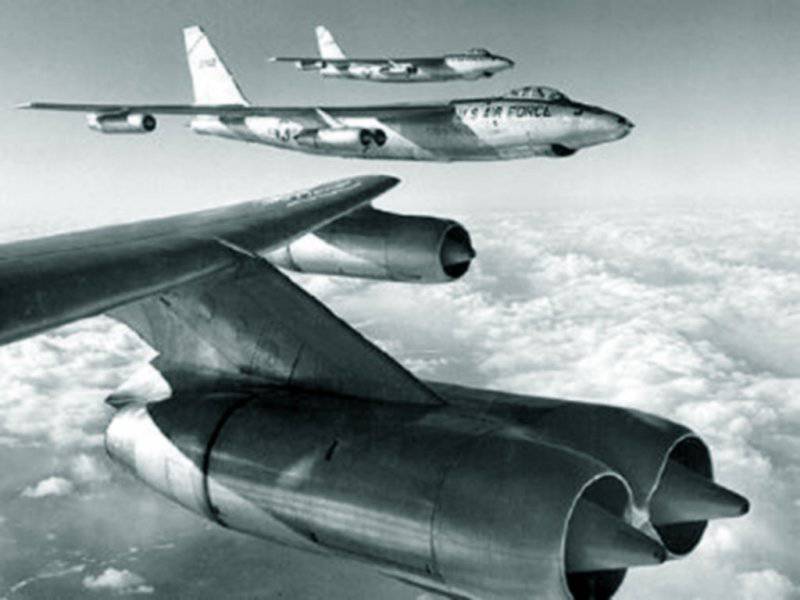
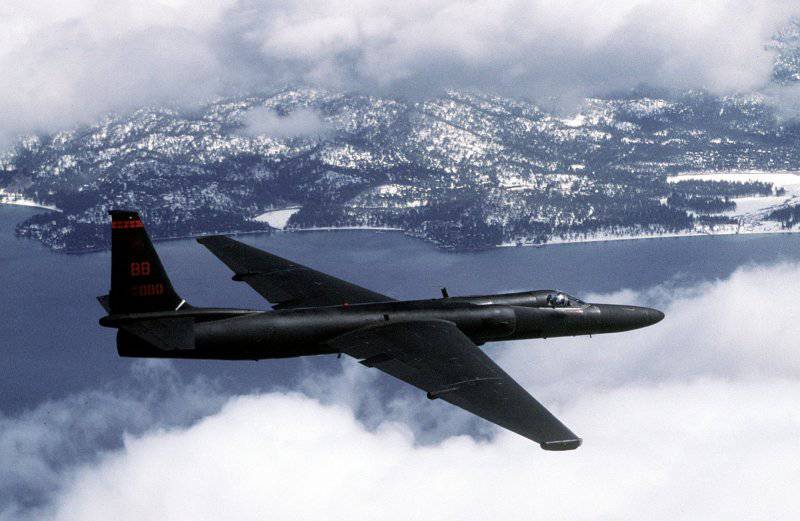
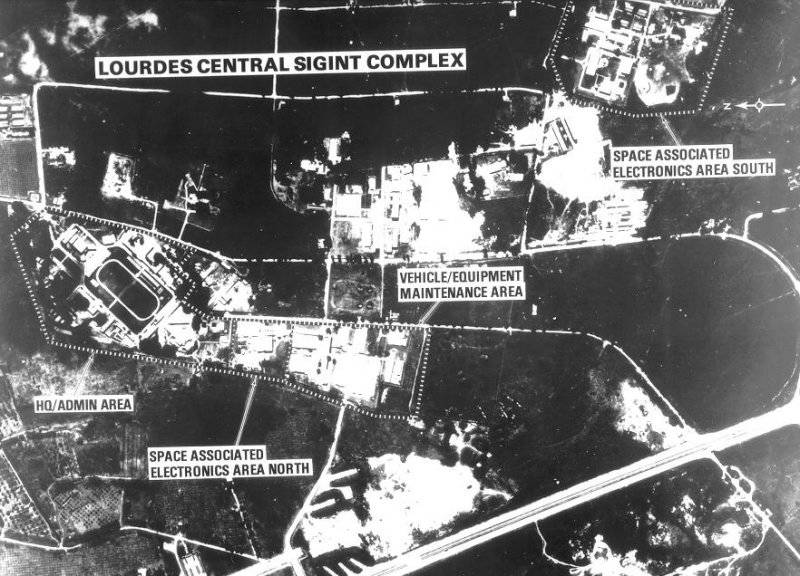
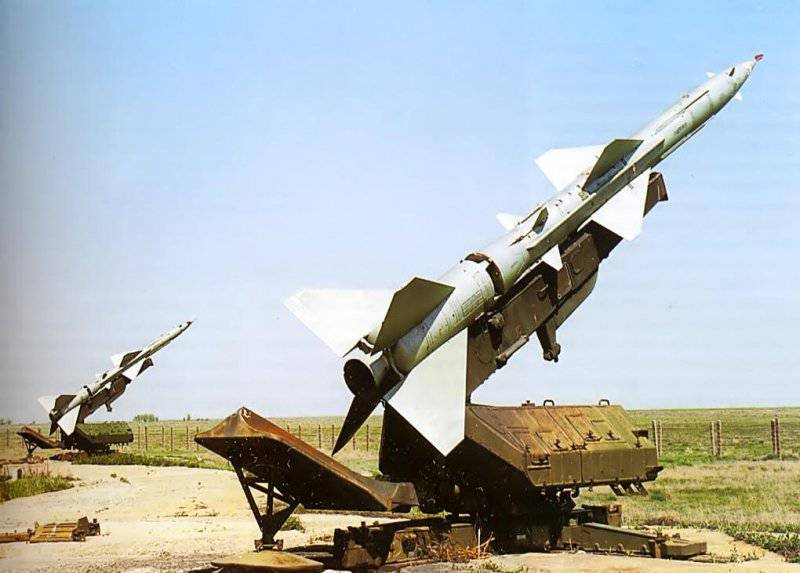
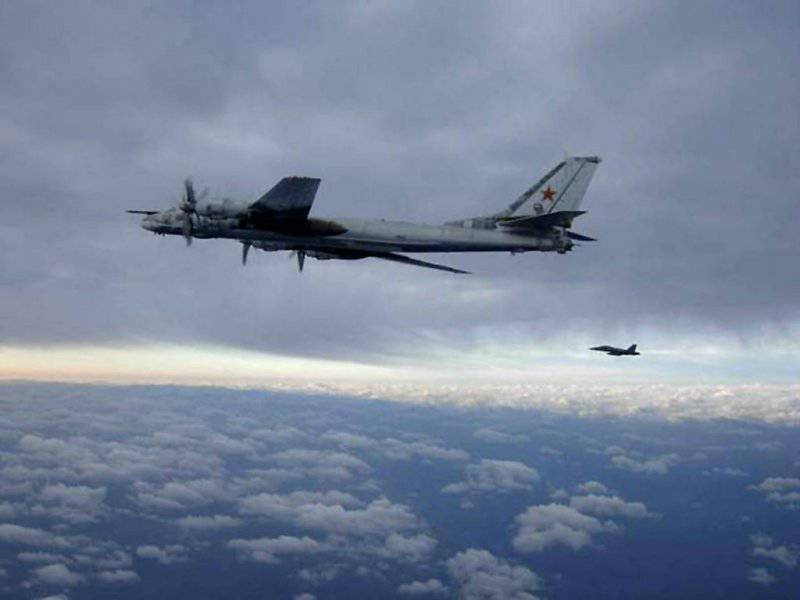
Information